A gap in the chart is a break in price. It’s a situation where there is a difference between the closing price of the previous bar and the opening of the next one. In the chart, the gap is seen as a “gap” between adjacent price movements, which means that no trade has been made for this instrument during this period.
So, a gap, in fact, is the absence of transactions at particular prices.
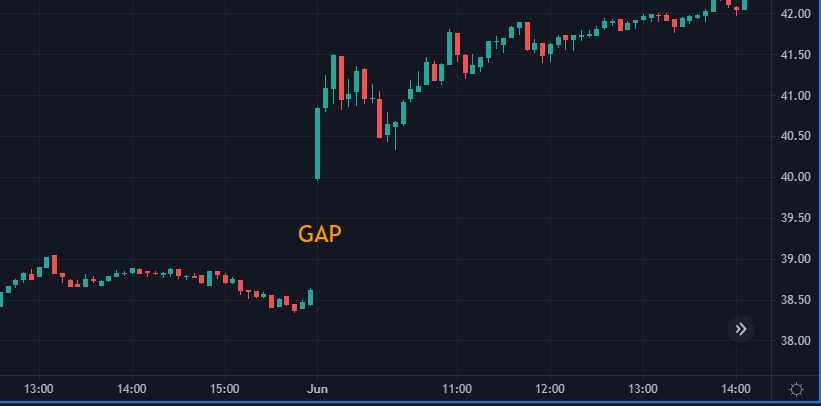
In general, a gap occurs when the news generates a strong wave of buyers or sellers at a time when the market is not open or liquidity is low. In this way, a large number of buy or sell orders produces a substantial movement in price.
Gaps in Forex
The Forex market never closes, even on weekends or holidays. A common misconception among Forex traders is that the market is closed over the weekend. In fact, only retail trading is closed on weekends. The Forex market as a currency exchange is alive and well.
When retail trading closes for the weekend, your broker simply denies you (as a retail trader) the ability to trade. This is why the size of gaps will often vary from one broker to another.
To the retail trader viewing a chart after 5 pm EST on Friday, it appears that the market is closed. In reality, the market is still moving behind the scenes, producing new bid and ask prices all weekend.
When retail trading opens on Sunday, a different price from the last price of Friday is often shown, creating the gap you see on your chart.
This happens because, during the weekend, there is also economic news. These are indeed less numerous than during the week, but they can never be ruled out, especially in spontaneous announcements by a government or some complicated geopolitical situation.
Traders are especially interested in meetings of central banks from regions such as the EU, Japan, Canada, the United States, Switzerland, New Zealand, Australia.
Types of Gaps
There are several, but for this article and to keep it simple and practical, we will focus on the bullish and the bearish gap.
- Bullish gap: It occurs when the opening price is higher than the maximum price of the previous day.
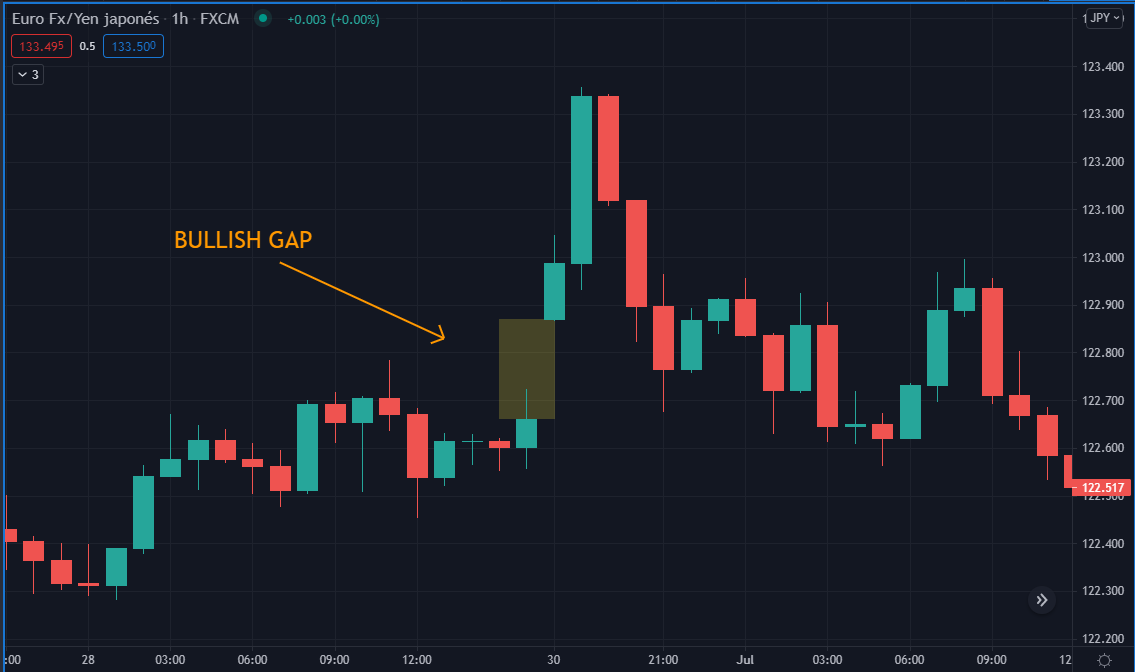
- Bearish gap: It occurs when the opening price is lower than the minimum price of the previous day.
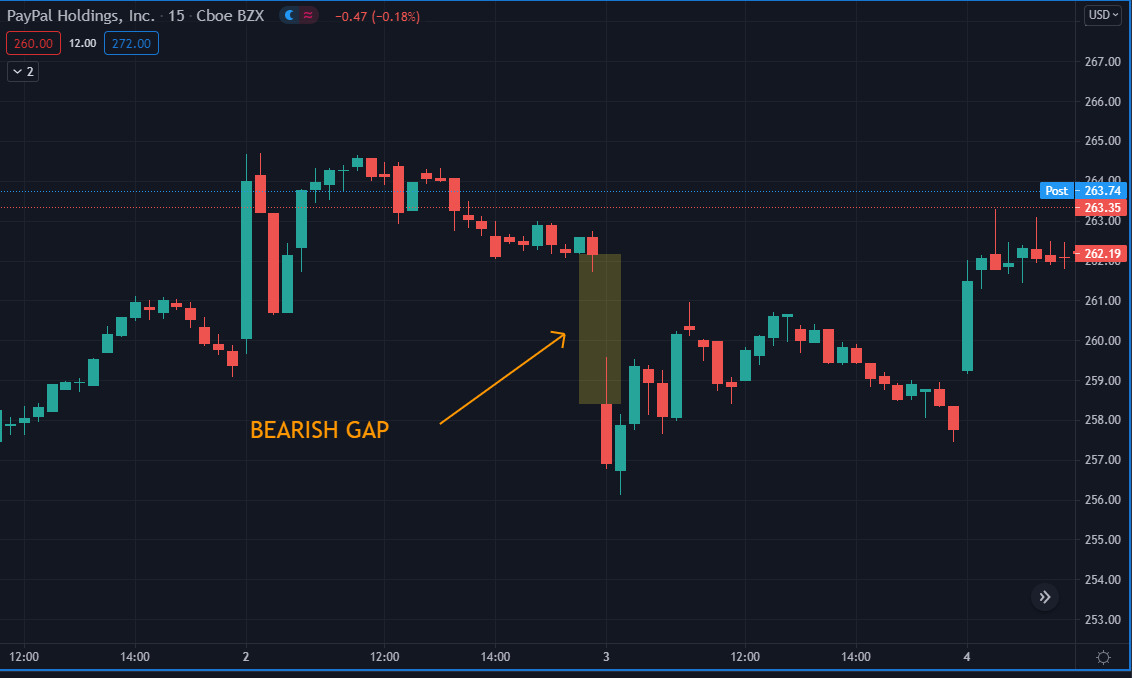
We’re more likely to see gaps in the stock market, but they still occur in Forex, especially after the weekends.
How to trade with market gaps?
When operating with a price gap, it is important to analyze this gap within the general context of the price trend in the asset in order to position ourselves intelligently.
In the short term, it may happen that the price shows the behavior of continuity or reversal after a gap. In a continuity behavior, price moves in the same direction as the gap, and in reversal behavior, price does the opposite. It is important to determine if we are in a continuity or reversal gap.
Gap levels can also act as technical support or resistance. In other words, after forming a bullish gap, the price may resist “filling” the gap. The same phenomenon can occur with bear gaps.
One strategy you can apply to trade gaps is to wait until the gap is filled. For example, in the chart below, we can see the asset is in a downtrend.
I recommend you not try to buy or sell just when the gap happens. To me, it’s a better strategy to wait and sell when the price approaches the previous closing price – this zone could work as a resistance.
So, going short here increases our probabilities to profit because we are following the trend.
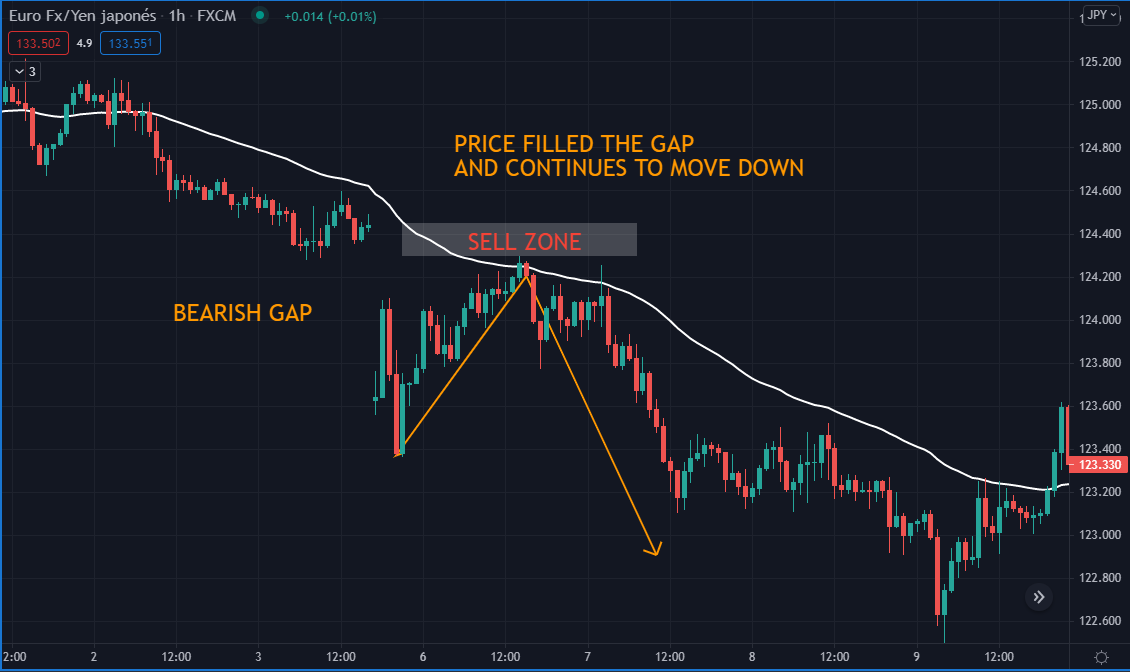
Also, remember trading gaps is mostly a day trading strategy. Thus it’s better to use smaller time frames like 1 hour or 15 min. I will show you another example of how to operate in this particular situation.
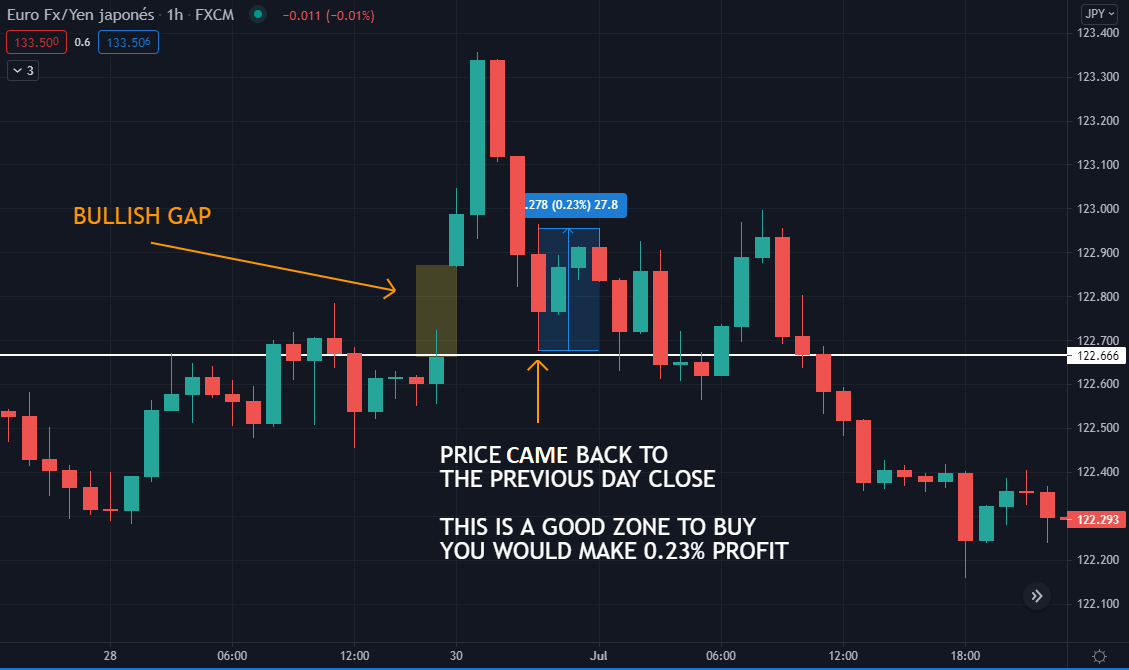
In the previous chart, we can see a bullish gap. Wait until the price touches the support zone (122.666) to buy.
Conclusion
The gap is an interesting and occasional pattern used to gauge entry and exit points in your trading.
Once you identify a gap, try to see the factors behind it to increase your chances of success. Always remember to manage your risk when trading.
If you consider that a gap should be closed, wait for the right moment to take your position, look for signs of weakness or change in the trend before riding the wave.